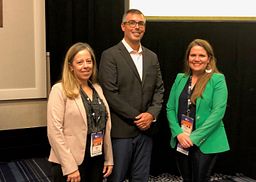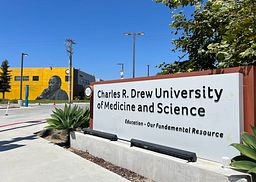How to Start Your AAPA-PAEA Research Fellowship Application
By: Bettie Coplan, PhD, MPAS, PA-C

Research is vital to advancing PA education and the profession. Yet, even in academia, where research is traditionally encouraged, PAs struggle to find the time and resources necessary to develop strong research skills. By funding protected time for research and providing valuable educational sessions and networking opportunities, the AAPA-PAEA Research Fellowship serves as a unique opportunity for PA educators to obtain the kind of support needed to successfully pursue scholarly work. When I completed the Fellowship, I was nearing completion of a doctorate, and the support I received was crucial. I was able to broaden my skillset, finish my degree, and establish important connections with other researchers. I am fortunate now to be serving as a mentor to a current fellow.
Based on my experience, my main recommendation for those considering applying to the Fellowship is to definitely apply! Reach out to PAEA or AAPA if you have questions about your eligibility and make every effort to submit a successful application, but don’t be intimidated by the process.
For many, one of the first and most important steps in developing a strong application is to identify the individual who will serve as a mentor for the Fellowship research project. For those who do not have an established relationship with a potential mentor, don’t hesitate to reach out to someone who has similar or related research interests and ask if they’d be willing to work with you. Once you’ve identified someone, confirm they will be able to review your Fellowship application and provide feedback, as well as meet with you regularly if you are selected. From start to finish, you should be able to count on your mentor as a go-to person for guidance on your Fellowship research.
Although it might go without saying, I think it’s useful to remind ourselves that another initial step in developing a strong application is to carefully read the guidelines, evaluation criteria, and recommended research topics. The main feedback my mentor provided after she reviewed the first draft of my Fellowship proposal was to better align it with the evaluation criteria. Alignment is key. No matter how good a proposal, how it’s rated largely depends on how well it directly addresses the defined criteria.
Once you have completed a draft of your Fellowship application, obtain feedback not only from your mentor but from at least one or two others you can count on to provide constructive criticism. For example, ask someone with knowledge of statistics to critique the methodology and analytic plan section. Positive reviews with no suggestions for improvement feel good but are unlikely to strengthen your application. The same principle applies to getting ready for the Fellowship interview. Ask a colleague who will provide useful feedback to conduct a mock interview with you, using the Fellowship guidelines and the evaluation criteria as a guide for questions that are likely to be asked.
Finally, don’t be deterred if your first application is unsuccessful. You will receive valuable feedback from expert reviewers that will help strengthen your research in the future. Use your experience to improve your application the next time around – at least two other Fellows have successfully reapplied when they weren’t selected on their first try. They incorporated their feedback and aligned it to the evaluation criteria to craft a strong, fundable proposal. The opportunity the Fellowship offers is definitely worth pursuing.
If you have questions or would like information about the Fellowship, visit the website or contact PAEA Research at Research@PAEAonline.org or 703-651-8540.



